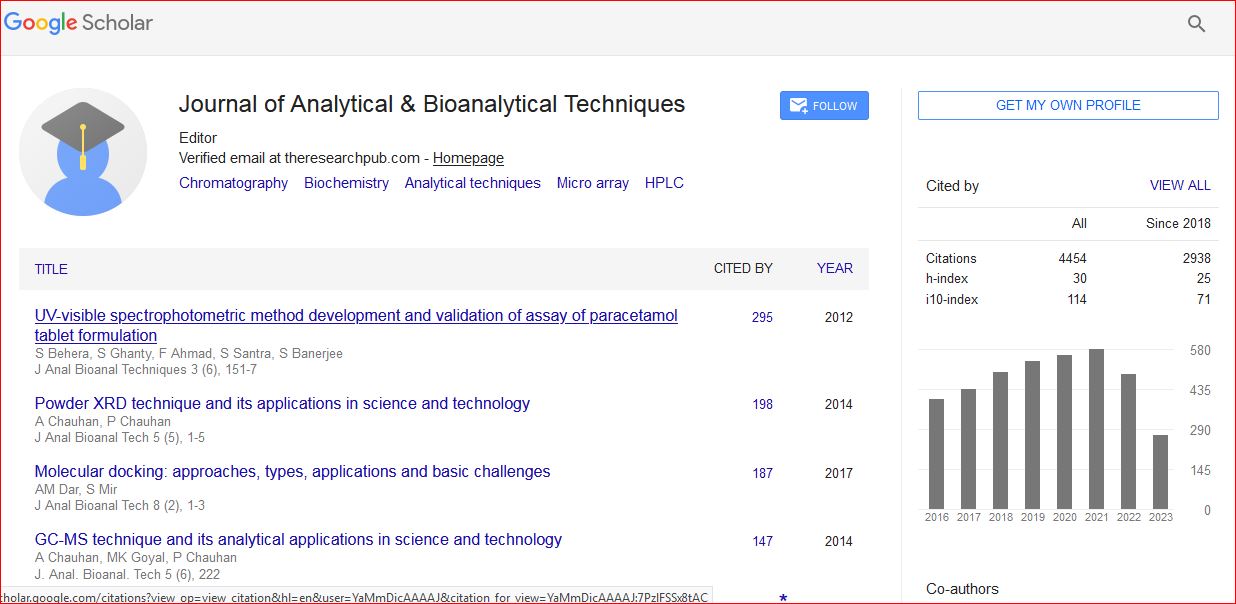Research Article
Determination of Epinephrine at a Screen-Printed Composite Electrode Based on Graphite and Polyurethane
Dias IARB, Saciloto TR, Cervini P and Cavalheiro ETG*Departamento de Química e Física Molecular, Instituto de Química de São Carlos, Av. Trabalhador São Carlense, 400, Centro, São Carlos, São Paulo CEP 13566-590, Brazil
- *Corresponding Author:
- Cavalheiro ETG
Departamento de Química e Física Molecular
Instituto de Química de São Carlos
Av. Trabalhador São Carlense, 400, Centro
São Carlos, São Paulo CEP 13566-590, Brazil
Tel : 55 (16) 3373-8054
E-mail: cavalheiro@iqsc.usp.br
Received date: February 03, 2017; Accepted date: February 20, 2017; Published date: February 27, 2017
Citation: Dias IARB, Saciloto TR, Cervini P, Cavalheiro ETG (2017) Determination of Epinephrine at a Screen-Printed Composite Electrode Based on Graphite and Polyurethane. J Anal Bioanal Tech 8:350. doi: 10.4172/2155-9872.1000350
Copyright: © 2017 Dias IARB, et al. This is an open-access article distributed under the terms of the Creative Commons Attribution License, which permits unrestricted use, distribution, and reproduction in any medium, provided the original author and source are credited.
Abstract
A screen-printed electrode based on a graphite and polyurethane composite (SPGPU) was used in the determination of epinephrine (EP) in cerebral synthetic fluid (CSF) sample. Both Differential Pulse Voltammetry (DPV) and Square Wave Voltammetry (SWV) were used to investigate the suitability of sensor for determination of EP. Under the optimum conditions, the analyte oxidation signal was observed at 0.17 and 0.080 V for DPV and SWV, respectively (vs. pseudo-Ag¦AgCl) in phosphate buffer (pH=7.4). A linear region between 0.10 and 1.0 µmol L-1 was observed in DPV, with detection limit of 6.2 × 10-7 mol L-1 (R=0.997). In SWV two linear ranges were observed, the first one between 0.10 and 0.80 µmol L-1 and the second from 1.0 to 8.0 µmol L-1 with limit of detection 9.5 × 10-8 and 6.0 × 10-7 mol L-1 (R=0.998) respectively. Recoveries of 99 to 100% were observed using the sensor for determination of epinephrine in the CSF. Interference tests showed that uric and ascorbic acids as well as dopamine increase the current of epinephrine, with acceptable levels for UA. The use of a standard addition of EP in the CSF solution containing the ascorbic acid allowed minimizing such interference.

 Spanish
Spanish  Chinese
Chinese  Russian
Russian  German
German  French
French  Japanese
Japanese  Portuguese
Portuguese  Hindi
Hindi 
